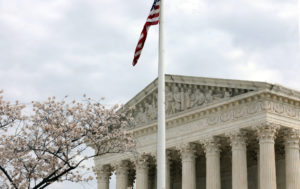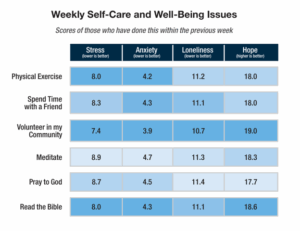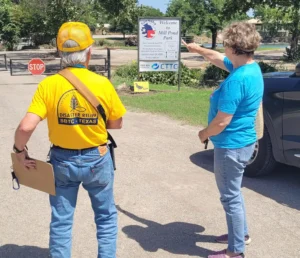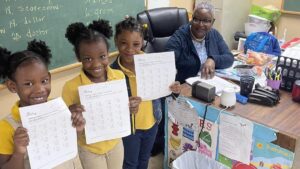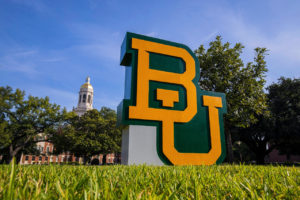
 Ministry is more than a black-or-white issue for an interracial church in Hopkinsville, KY. After only one year, Means Avenue Baptist Church has created a demographic diversity few Baptist churches could top. With 70 percent African-Americans, 30 percent Caucasians and several Hispanics, the mission church has formed a truly integrated congregation.
Ministry is more than a black-or-white issue for an interracial church in Hopkinsville, KY. After only one year, Means Avenue Baptist Church has created a demographic diversity few Baptist churches could top. With 70 percent African-Americans, 30 percent Caucasians and several Hispanics, the mission church has formed a truly integrated congregation.
In August 1994, Pastor Enoch Nyakoon was called to start the congregation with five people, under the auspices of Second Baptist Church in Hopkinsville. Since then, more than 60 people have made professions of faith in Jesus Christ through the mission's ministry. Attendance in Sunday school has reached nearly 60.
"I baptized 25 persons," says Nyakoon, a native of Liberia, West Africa: "Two Africans, four Caucasians and 19 African-Americans." Seven others joined by letter and statement. "The uniqueness of Means Avenue, the history of this community and African-American churches made it difficult to baptize all our converts," he says. "Overall, the size of this new church and the number of baptisms is a blessing."
Nyakoon alluded to Second Baptist Church's painful growth toward holistic and effective ministry amid racial turmoil in Hopkinsville. The church's history affirms that change is rarely easy but often necessary.
Fifteen years ago, Second Baptist Church started a new work as a Sunday school class in a community building at a government-assisted housing complex. The work — in a predominantly Caucasian neighborhood-grew to include worship and other activities, says Kent Workman, pastor of Second Baptist Church.
With the larger church's sponsorship, the Sunday school class grew into Pennyrile Mission, which eventually purchased its own building and hired its own pastor. Soon, however, a reversal of housing trends in the area resulted in many whites moving out and African-Americans moving in, Workman says. The neighborhood surrounding Pennyrile became predominantly African-American.
As a result, the mission lost its effectiveness in the community, Workman notes. Rather than impacting the surrounding community for Christ, "we were busing in Caucasians from other parts of town," Workman adds.
Leaders considered shutting down the mission after the pastor resigned and the ministry dropped to about 10 people. But consultation with Kentucky Baptist Convention and Southern Baptist Home Mission Board representatives led to the decision to bring in an African-American or African pastor to lead a new congregation.
Nyakoon and his wife, Roseline, had come to Kentucky to pursue theological education at Southern Baptist Theological Seminary. Since earning the master of divinity and master of theology degrees, Nyakoon has taught Greek and served in a number of ministerial and evangelism capacities in the United States. Because of civil unrest in Liberia, he cannot return home.
One of the first things Nyakoon did as pastor of the congregation was suggest changing the name from Pennyrile Mission to Means Avenue Baptist Church. "Many black people don't understand the concept of 'mission,'" Nyakoon explains. "To them, it sounds like food giveaways instead of a church."
Second Baptist Church agreed to the change, facilitating the leap over the first hurdle in altering the church's image in the community. In about a year's time, the church's population changed from 95 percent Caucasian to 70-75 percent African-American.
The mission's growth has been beneficial for both congregations, Workman says. "It's been a big step for us . … It's been a blessing as our people have grown through this experience." However, such a rare beacon of interracial worship came with a price. Nyakoon acknowledged receiving telephone harassments and death threats, especially when he baptized new white and black members at the same service.
Caucasians and African-Americans do not have a history of cooperation in Hopkinsville, Nyakoon says. "They do not mix. The race gap between blacks and whites is one of the biggest in the United States." Given such problems, Means Avenue's work represents an even greater success. Although great strides have been made, prejudice and misunderstanding still thwart the ministry, Nyakoon said. But the pastor reiterated his determination to persevere. "Some have a negative perspective of the church," he says. "But maybe one day they will realize we are not here to have a white church or a black church, but to have a church of Jesus Christ."
Some Surprising SBC Stats
Despite the SBC's lily white image, a noteworthy percentage of the 39,910 Southern Baptist churches in the country are dominated by groups other than Anglos. The Home Mission Board reports 7,001 language congregations and 1,817 African-American congregations. Southern Baptists worship in more than 100 languages each week. Some other statistics of interest:
• Since 1975, Southern Baptists in America have resettled more than 20,000 refugees, resulting in more than 500 language and culture congregations.
• More than 2,500 Southern Baptists are involved in ministries with deaf and hearing impaired people.
• Southern Baptists broadcast in 18 languages over 275 radio and 30 television stations.
• There are Southern Baptist churches in all 50 United States.
• The United States is the fifth-largest Spanish speaking country in the world.
• Los Angeles' Hispanic community is larger than any Central American country.
• Miami is the second-largest Cuban city.
• Daily newspapers are printed in more than 45 languages within the United States.
• Chicago is the world's second-largest Polish city, behind Warsaw.
• More American Indians live in urban areas than on reservations.
• More than 80 percent of U.S. legal immigrants come from Latin America and Asia.




